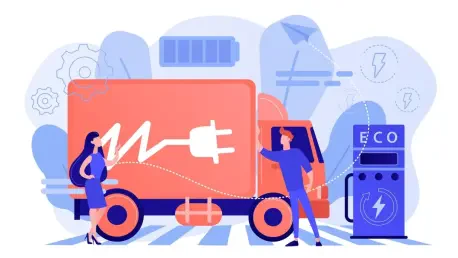I’m thrilled to sit down with Rohit Laila, a veteran in the logistics industry with decades of experience in supply chain and delivery. Rohit’s passion for technology and innovation has positioned him as a thought leader in sustainable freight solutions. Today, we’re diving into the groundbreaking partnership between two key players in the UK logistics scene, focusing on their efforts to launch a fully electric parcel delivery network. Our conversation explores the inspiration behind this collaboration, the challenges of scaling electric freight, the role of digital platforms in accessibility, and the broader push for decarbonization in the sector.
Can you tell us what sparked the idea for a partnership to create a fully electric parcel delivery network in the UK?
The idea really came from a shared vision to tackle one of the biggest pain points in logistics: emissions. Both parties saw an opportunity to combine expertise—one in electric delivery operations and the other in accessible logistics tech—to make zero-emission transport a reality for more providers. The goal was twofold: drastically cut emissions per parcel, potentially by up to 76 percent, and prove that electric freight can match the reliability of traditional diesel fleets with near-perfect on-time delivery rates. It was about showing the industry that sustainability doesn’t mean sacrificing performance.
How did you calculate the impressive 76 percent emissions reduction per parcel that’s been highlighted?
That figure comes from a detailed analysis comparing the carbon footprint of electric heavy goods vehicles, or HGVs, against their diesel counterparts across various delivery routes. We factored in energy consumption, vehicle efficiency, and real-world data from urban and regional deliveries. It’s a robust estimate, and while it can vary slightly based on route length or load, we’re confident it holds up as a benchmark for most scenarios. The key is that electric HGVs eliminate tailpipe emissions entirely, which is a game-changer for freight.
What sets this fully electric delivery approach apart from other services in the UK market?
What makes it unique is the comprehensive focus on electric from start to finish, especially with the integration of 44-tonne electric HGVs for mid-mile and long-haul transport. Most companies still rely on diesel for heavier loads or longer distances, but this model builds a layered network—combining urban electric vans with heavy-duty electric trucks—to minimize fossil fuel use across the board. It’s about creating a seamless, end-to-end sustainable system that doesn’t compromise on capacity or reliability.
Can you walk us through how the digital platform makes electric delivery more accessible for logistics providers?
Absolutely. The platform acts as a one-stop shop for logistics providers, especially smaller ones who might not have the resources to invest in their own electric fleets. It integrates electric vehicle capacity into familiar workflows, automates things like carrier onboarding, and handles compliance and payments. Features like carbon tracking also let users monitor their emissions in real time, which is huge for meeting sustainability goals. It lowers the barrier to entry by offering on-demand access to zero-emission options without the upfront capital burden.
The logistics sector in the UK seems to be under intense pressure to reduce emissions. How are companies feeling this push right now?
The pressure is very real and multifaceted. On one hand, regulations are tightening, with stricter emissions targets and low-emission zones popping up in cities. On the other, customers—especially big shippers—are prioritizing sustainability in their procurement decisions. About two-thirds of logistics buyers now see emissions as a top concern when choosing providers. Partnerships like this one help by offering a cleaner alternative to diesel that’s backed by data and performance metrics, giving companies a way to meet these demands without overhauling their entire operation.
Infrastructure challenges, such as charging depots and grid capacity, are often cited as major hurdles. How are you planning to address these issues?
It’s a tough nut to crack, no doubt. We’re working on strategic partnerships to expand access to high-capacity charging depots, focusing initially on key logistics hubs. Some regions, particularly rural areas, lag behind in infrastructure, so we’re also advocating for grid upgrades. Government support is critical here—whether through funding for charging networks or incentives for electrification. In the meantime, we’re optimizing routes to make the most of existing infrastructure, ensuring we can scale without getting bogged down by these constraints.
Looking ahead, what’s your forecast for the future of electric freight in the UK logistics sector?
I’m optimistic but realistic. Electric freight is no longer just a niche idea—it’s becoming a core part of the industry, with major players committing to battery-powered fleets. Over the next decade, I expect adoption to accelerate as infrastructure catches up and costs for electric vehicles come down. Partnerships and platforms will play a huge role in making this accessible to all sizes of providers. That said, it won’t be without growing pains—policy, grid capacity, and operational adjustments will need to align. But the trajectory is clear: sustainability is becoming the backbone of logistics, not just an add-on.









